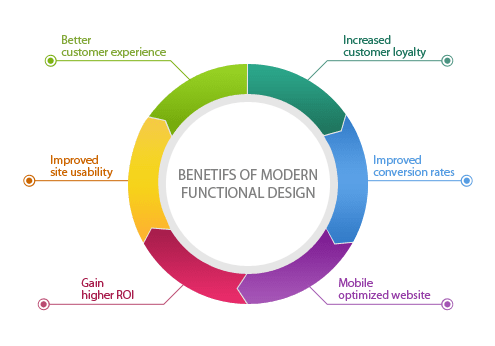Contents
Introduction
Designing user interfaces goes beyond our thoughts, posing challenges that extend beyond the tools we use. As we have explored the world of UI design in our earlier blogs, we are now revealing the complexities that designers face. We’ll address the UI design challenges, showing how they play a crucial role in refining the art of user interface design. Join us to discover the UI design challenges that designers navigate daily.
Brand Consistency
It is crucial for UI design to uphold brand consistency; however, problems can occur when design elements deviate from defined brand requirements. For example, there may be a mismatch if a financial app uses lively colors that go against the brand’s reputation for dependability and trustworthiness. The visual coherence of the brand is weakened, and user perception is put at risk by this misalignment. A seamless and recognizable user experience depends on finding a balance between creative UI design and brand aesthetics. Maintaining consistency improves the user experience overall by fostering trust and brand familiarity. Addressing the few UI design challenges are paramount.
Emotional Design
Designing UIs that resonate with diverse users, considering varied mindsets, cultures, and experiences, proves challenging. Despite Google Forms’ data collection, personas often fall short in capturing the wide user range. Balancing this requires acknowledging the intricate complex web of user backgrounds. Efficient user interface designs promote compassion and use color components that cut across cultural divides to promote diversity. Aware of the dynamic nature of user experiences, continual user involvement, and iterative design modifications based on changing insights are all prerequisites for success. UI design challenges like this can be very difficult to address.
Responsive Design
One of the primary UI design challenges is ensuring device compatibility and uniformity of designs across various platforms, including tablets, mobiles, and systems. A keen eye for visual harmony, uniform navigation, and responsive design are necessary to achieve seamless user experiences. A complex strategy is needed to adapt interfaces to different screen sizes, resolutions, and input methods. Prioritizing simplicity, and important features, and maintaining a unified visual language are all tasks that designers must perform. It’s critical to strike a balance between a consistent brand identity and platform-specific norms. In the end, regardless of the device being used, effective device consistency increases user engagement, lowers learning curves, and creates a sense of familiarity.
Content Presentation
Achieving an equilibrium between providing necessary data and preventing information overload is crucial when designing a user interface (UI). When information is presented inadequately or there is an excessive volume of text, users may get annoyed. Having an ideal balance offers an interface that is both aesthetically pleasing and easy to use. To improve user experience, use concise text, visually appealing features, and simple navigation. To effortlessly guide users, prioritize important information, make the balance of using whitespace, and choose interactive elements carefully. To overcome UI design challenges like these, striking this balance is crucial without overloading them with unnecessary or badly displayed content is critical for creating an ideal UI.
We quote Muriel Cooper “ Information is useful when it can be understood” . So we must design and present content in a way that can be understood and useful to users.
Iterative Approach
In UI design challenges, upcoming trends and user expectations require an iterative approach. Continuous engagement demands a balance between adapting to trending designs and required needs and maintaining a stable interface. Instead of frequent overloading, designers adopt incremental improvements, allowing the UI to enhance gradually. This iterative design strategy ensures responsiveness to user expectations and aligns with current trends, creating a sustainable and user-friendly interface. It strikes a well-designed UI between meeting contemporary design trends and for a familiar user experience.
Efficiency of Tools
UI design efficiency is one of the major UI design challenges when trends change and an array of tools become available. It’s difficult to become an expert with every upgrade; you have to constantly adjust. Keeping up with a variety of interfaces and features is essential for navigating the dynamic design. Because the design trends are emerging, developing user-friendly interfaces requires constant learning. Designers must constantly learn new skills because they must have a balance between proficiency and a wide range of available of tools. Effective UI design becomes a difficult task that requires flexibility, adaptation, and a great sense of market trends in order to thrive in the UI design.
While Updating with trends is a challenge, Trends makes your work simple if we can take advantage of them
Jen and Phil 🤔
Generative Fill ✅You heard that right: this year’s #AdobeMAX will bring new AI innovation to your favorite Adobe products. Tune in October 10-12 to see the magic! https://t.co/HBW4HuE3Pe pic.twitter.com/usSmlKzHuu
— Adobe (@Adobe) October 2, 2023
Easy Navigation
One of the UI design challenges that designers often have is creating a user interface that is easy to navigate. It takes an intelligent mix of intuition and user-centric design to achieve simplicity without losing usefulness. Crucial factors to take into account are anticipating expectations, recognizing a range of user preferences, and ensuring accessibility across devices. To make a user experience seamless, designers need to choose intuitive iconography, arrange content expertly, and perfect menu layouts. The skill of simplification—removing complexity while maintaining an advanced and responsive interface—is the difficulty. Finding the ideal balance requires iterative testing and improvement, which turns basic navigation into a never-ending search for harmony in the field of design.
Functionality and Form
An apparent approach is necessary to strike the delicate balance between simplicity and functionality. Elements of the navigation must be simple to use and suitable for a wide range of user demographics. Making intelligent decisions is necessary for ensuring a smooth flow while preventing visual clutter. Prioritizing content, assessing user expectations, and handling potential accessibility issues are challenges that designers must face. It takes continuous iteration and user testing to fine-tune navigation patterns while creating a user-centric experience. A thorough grasp of user behaviour is necessary to strike this balance, which makes simple navigation, to address UI design challenges where depth and clarity must coexist.
Credits : Paldesk
Future Proofing
Designing user interfaces faces the intricate challenge of balancing future-proofing with evolving user expectations and emerging trends. Achieving this equilibrium involves anticipating design shifts while staying attuned to user behaviours. Striking the right balance necessitates a forward-looking approach to design, embracing adaptable frameworks and intuitive interfaces. Designers must predict user needs and preferences, aligning interfaces with trending designs. It takes an in-depth awareness of emerging trends, possible user changes, and technology breakthroughs to successfully navigate this complex setting. The fundamental UI design challenges are maintaining usability in a constantly changing digital environment while making sure that designs are still relevant and appealing to consumers years down the road.
Product/ Service Alignment
Aligning a product or service with UI design consists a crucial challenge in integrating functionality and user experience. Achieving synergy between the visual interface and the core offering demands a delicate balance. Sometimes the essence of product does not align it with brand or color consistencies. The UI must reflect the essence of the product or service, ensuring clarity, intuitiveness, and brand identity. Striking this alignment involves thoughtful placement of elements, intuitive navigation, and a visually appealing design that resonates with the user’s expectations. Enhancing the user interface with the underlying product/service functionalities is not just a UI design challenges; it’s a strategy to enhance user engagement and satisfaction through a purposeful visual experience.
Conclusion
Challenges are inevitable everywhere. While we listed all the UI design challenges, it is equally important to resolve those in an effective way. Partnering with experts like Sparity can effectively address and overcome these hurdles. Their proficiency in tackling UI design challenges ensures optimal solutions, enhancing the overall design process. With Sparity as a strategically, UI designers can navigate complexities, leading to innovative and user-friendly outcomes.





